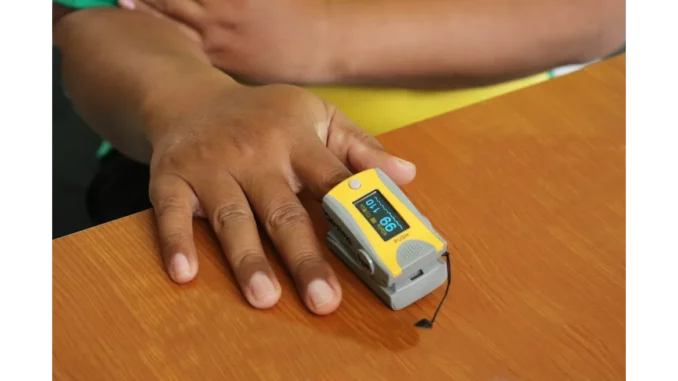
In the tranquil setting of an office filled with the gentle hum of computers and the rustling of documents, I had the opportunity to engage in conversation with Dr Susan Caldwell, a distinguished researcher at Zynex Inc. Our discussion revolved around the significant advancements the company has achieved with its NiCO laser-based pulse oximeter. As a journalist with a keen interest in the technological innovations within the healthcare sector, I was eager to explore the profound implications of this development.
Dr Caldwell, exuding an air of calm and eloquence, began by discussing the importance of their recent achievement. “Completing the clinical verification trial at Duke University was a significant milestone for us,” she remarked, her voice tinged with a note of pride. “This accomplishment transcends simply meeting FDA requirements; it is about guaranteeing that our device functions with precision and reliability across a diverse patient demographic.”
The NiCO pulse oximeter represents a significant departure from conventional LED-based devices. Traditional pulse oximeters, which utilise light-emitting diodes to estimate blood oxygen levels, have often been criticised for their lack of accuracy, particularly in individuals with darker skin tones. In contrast, the NiCO employs laser technology to directly measure oxygenation, addressing a long-standing issue of precision in the field. This innovation promises to enhance the accuracy of readings across different populations, marking a substantial leap forward in medical technology.
Dr Caldwell elaborated on the trial process, underscoring the collaboration with Duke University and anaesthesiologist Dr David MacLeod. “Our partnership with Duke University was invaluable,” she noted. “Their expertise in clinical trials and dedication to improving medical outcomes made them the perfect partner. Dr MacLeod’s team offered critical insights that were instrumental in refining the NiCO device.”
When queried about the challenges faced during the trial, Dr Caldwell responded with a soft chuckle, “Clinical trials invariably come with their set of challenges. Ensuring the device performed flawlessly under varied conditions and across different skin types demanded extensive testing. At times, it required us to revisit and adjust certain technological aspects.”
The completion of the trial marks a crucial step towards the FDA 510(k) submission, a stringent process ensuring medical devices’ safety and efficacy before they are marketed. Dr Caldwell expressed optimism regarding the forthcoming stages. “The most challenging part is behind us. We are now concentrating on final safety testing to ensure the NiCO is ready for clinical application,” she stated confidently.
Our conversation naturally shifted to the broader implications of the NiCO’s market introduction. “This achievement is not merely a victory for Zynex; it is a triumph for the medical community and patients globally. Accurate measurement of blood oxygen levels in diverse populations can significantly impact patient care,” Dr Caldwell asserted. Zynex’s founder and CEO, Thomas Sandgaard, has also voiced enthusiasm about NiCO’s potential market influence. Dr Caldwell recounted his sentiments, revealing the company’s view of the device as transformative. “This is our first monitoring product entering a mature and expanding market, and its capabilities are indeed groundbreaking. We are excited to introduce this innovation to healthcare providers and patients.”
As our discussion drew to a close, I inquired about the future of medical technology at Zynex. Dr Caldwell’s response was a testament to the company’s unwavering commitment to innovation. “We continually strive to push boundaries and enhance healthcare outcomes. The NiCO is just the beginning. We have a series of projects in the pipeline aimed at addressing various gaps in medical monitoring and therapy.”
As I departed from the Zynex offices, I found myself reflecting on the broader implications of our conversation. The NiCO pulse oximeter signifies more than just a technological breakthrough; it embodies a shift towards more inclusive and precise healthcare solutions. As Zynex advances towards FDA submission, the medical community—and patients worldwide—anticipate the unfolding of this promising narrative.
In a field where precision and reliability are paramount, Zynex’s efforts with the NiCO device illuminate a path of progress. It stands as a testament to what can be accomplished when innovation, collaboration, and a relentless pursuit of excellence converge in the service of medicine.


Be the first to comment